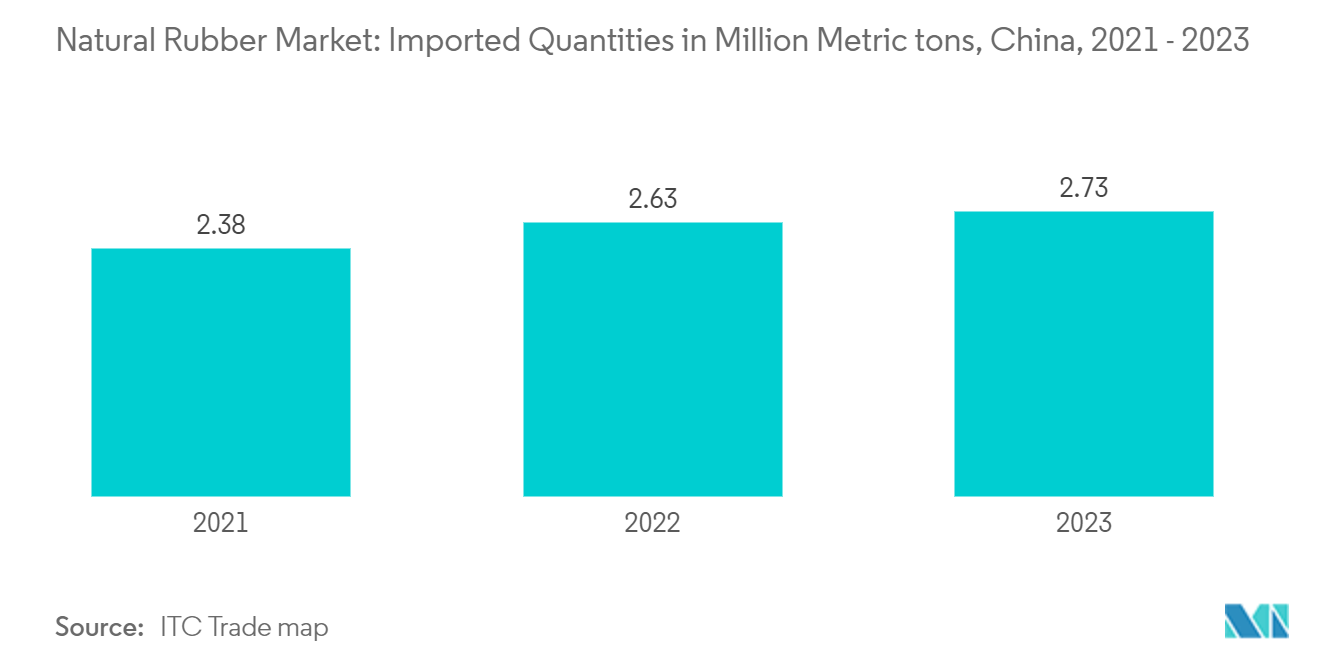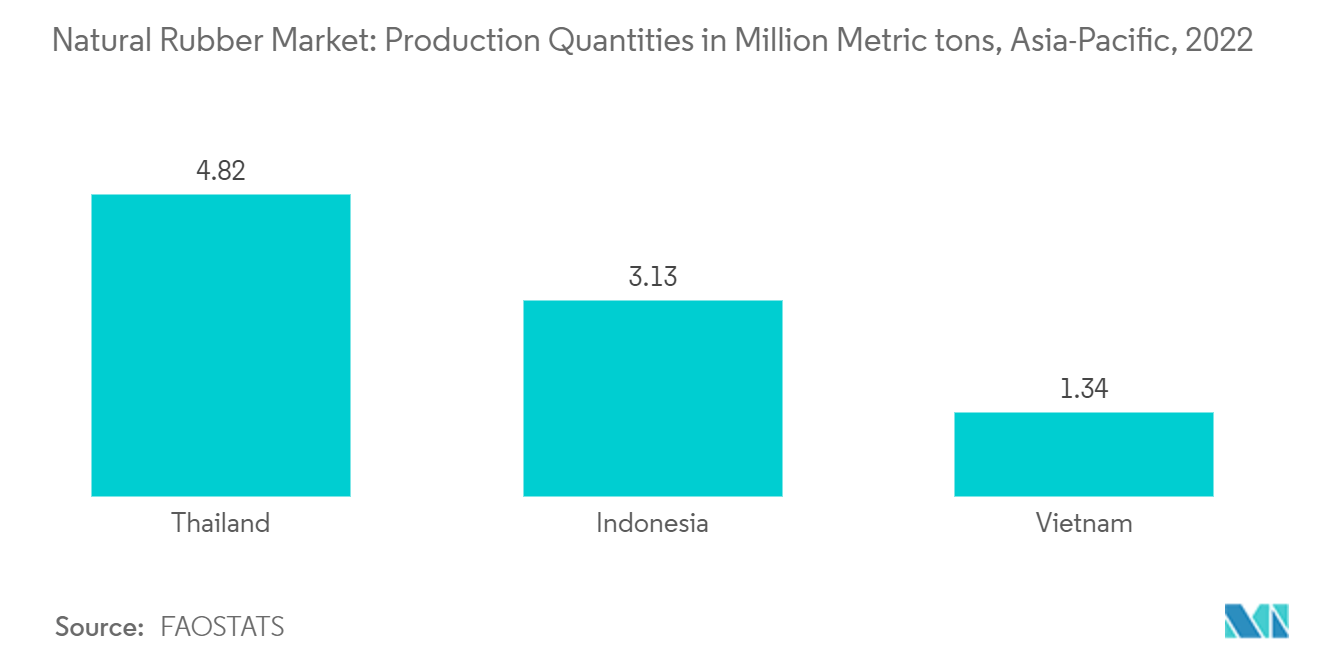Market Trends of Natural Rubber Industry
Increasing Demand from Multiple Industries
The demand for natural rubber is increasing due to its characteristic properties, such as adhesion to metals and resistance to abrasion, which make it suitable for manufacturing seals, tires, etc. The properties of natural rubber, such as high tensile strength, vibration dampening, and tear resistance, make it ideal and more preferred than synthetic rubber for its application in the automobile industry and large constructions. The largest end-user of rubber is the automotive parts industry, which uses a massive amount of rubber to make pipes, gaskets, car tires, hoses, and other parts yearly.
The high growth in developing economies and the increasing per capita income among consumers in these countries increase the demand for automobiles. This, in turn, increases the demand for rubber in these regions. In countries like China, India, Brazil, Indonesia, Malaysia, and Vietnam, the growth of industrial and infrastructure industries is on the rise, which is expected to impact the rubber market positively. According to the ITC trade map, China imported 2.73 million metric tons of natural rubber in 2023.
Natural rubber is used in footwear manufacturing due to its properties, such as durability, slip resistance, and tensile resistance, resulting in increased demand from the footwear industry. The increased applications of natural rubber are increasing the demand for high natural rubber production, which has led to the harvested area of natural rubber globally. According to the FAOSTATS, in 2021, the harvested area of natural rubber globally was 13,420,413 hectares, and in 2022, it reached 13,785,378 hectares. Therefore, the increasing demand from developing countries in line with the increased global production is anticipated to drive the natural rubber market.

Asia-Pacific is Dominating the Market
Natural rubber is a vital agricultural commodity used for manufacturing in various industries, such as automotive, manufacturing, and medical. Thailand, Vietnam, and Indonesia are some of the dominant natural rubber producers. Thailand is the top producer in the world, and the country produced about 4.82 million metric tons of natural rubber in 2022. Around 90% of natural rubber production in Thailand is produced by smallholder farmers, while 10% comes from estates/large-scale holders.
The rubber produced by the smallholder farmers is generally sold as field latex, unsmoked sheets, cup lumps, or crepe blankets, and it is handled by intermediaries, reducing the income of these farmers. Among key consumers, China is one of the major three automobile manufacturers in the world. The increasing growth of the automobile industry resulted in an increased demand for raw materials, such as natural rubber.
Thailand, Vietnam, and Indonesia are some of the major exporters of natural rubber to China. According to the ITC Trademap, over half of China's natural rubber imports come from Thailand. According to the ITC Trademap, Thailand and Indonesia exported 3.28 and 2.04 million metric tons of natural rubber in 2022, respectively.


